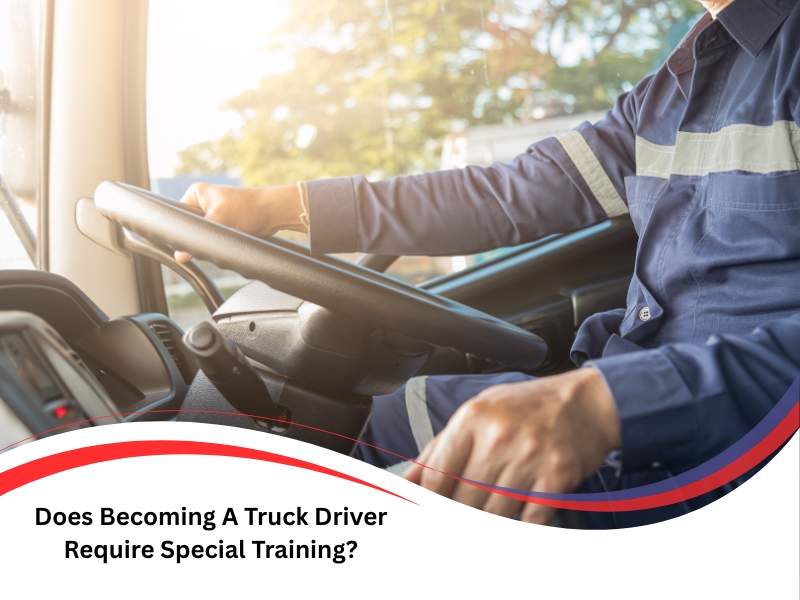Wondering why becoming a truck driver feels far more complex than simply driving a car? It’s because the responsibility—and the risk—is significantly higher. Truck drivers need specialised training, licences, and real-world experience to ensure the safety of everyone on the road. This article explains the licences, vehicle types, assessments, and experience you’ll need to become a skilled truck driver in Australia.
What licences are needed before becoming a truck driver in Australia?
Getting started requires a clear understanding of which licence suits your goals:
- Light Rigid (LR): For trucks up to 8 tonnes GVM, mainly used in delivery services and smaller moving jobs.
- Medium Rigid (MR): Covers vehicles over 8 tonnes with two axles, ideal for mid-sized freight and council work.
- Heavy Rigid (HR): Allows driving trucks with three or more axles, standard in construction, bulk delivery, and logistics companies.
- Heavy Combination (HC): Suitable for prime movers with trailers, essential for long-haul freight and agricultural supply chains.
- Multi Combination (MC): Required for B-doubles and road trains, the most advanced category that unlocks interstate and high-capacity contracts.
Each class builds on your car licence and requires extra steps like:
- Passing a heavy vehicle knowledge test that covers safety checks, rules, and compliance,
- Completing supervised practical lessons with qualified trainers who can show advanced manoeuvres,
- Submitting a current medical fitness report to confirm suitability for demanding work,
- Booking a heavy vehicle skills assessment to test your ability behind the wheel under real-world conditions,
How does a truck licence assessment differ from a standard driving test?
Truck assessments go far beyond the basics. You’ll face tasks that prove you can manage a heavy vehicle safely in any conditions:
- Pre-Operational Checks: Inspecting tyres, brakes, couplings, mirrors, and safety equipment before every trip.
- Load Securing: Showing techniques to tie down freight, balance loads, and prevent shifting during sudden stops.
- Reverse Manoeuvres: Steering large trucks into tight spaces while maintaining control of speed and direction.
- Road Law Application: Demonstrating awareness of heavy vehicle speed limits, fatigue management laws, and safe following distances.
Assessors will also watch for smooth gear shifts and defensive driving techniques. Failing to prepare properly can lead to failed assessments and delays. To build skills confidently, consider enrolling in efficient training for becoming a professional truck driver that covers all assessment requirements in detail.
Which vehicle types should you learn to handle when becoming a truck driver?
 Training involves exposure to different truck setups and operating conditions. Gaining familiarity with each type builds confidence and skill:
Training involves exposure to different truck setups and operating conditions. Gaining familiarity with each type builds confidence and skill:
- Rigid Trucks: Single-body vehicles with no trailers, often used for deliveries and building materials.
- Articulated Trucks: Prime movers connected to semi-trailers, common in long-haul freight and larger logistics jobs.
- Tippers and Dog Trailers: Designed to carry loose bulk materials and operated with hydraulic lift systems.
- B-Doubles: Multi-trailer combinations requiring advanced reversing skills and precise coupling techniques.
Learning each vehicle type helps you:
- Manage unique weight distributions and tricky turning circles in urban areas.
- Operate hydraulic systems safely and efficiently for tipping or loading.
- Reverse into tight loading docks with precision, maintaining awareness of clearance and blind spots.
- Conduct thorough pre-departure checks tailored to each configuration, including brake testing and load balance.
Understanding this diversity prepares you to handle real-life demands with fewer surprises. For extra insights, understanding essential truck driver skills every beginner should know to see which abilities employers value most.
Why do truck drivers need practical driving experience before licensing?
You can’t master truck driving in a classroom alone. Practical lessons provide hands-on experience that written tests don’t cover:
- Load Management: Learning how freight weight affects stopping distance, handling, and risk of rollover.
- Traffic Navigation: Safely driving in city congestion, regional highways, and unpredictable weather.
- Fatigue Prevention: Recognise early signs of tiredness and take proper rest breaks. Using truck driver seat cushions that reduce back pain can also boost comfort, support posture, and ease lower back strain.
- Emergency Response: Practising what to do when brakes fail, tyres blow out, or mechanical issues occur.
Completing supervised hours behind the wheel demonstrates you’re not just ticking boxes but building genuine skills. Here’s a detailed reference comparing supervised experience:
Licence Class | Minimum Supervised Lessons | Typical Lesson Duration | Common Vehicle Type | Key Skills Covered |
HR | 5 lessons | 1–2 hours each | Heavy Rigid Truck | Gear shifting, load restraint, hazard checks |
HC | 10 lessons | 2–3 hours each | Prime Mover + Trailer | Coupling/uncoupling, reversing, legal compliance |
MC | 15 lessons | 3 hours each | B-Double | Multi-trailer management, fatigue management, safety |
If you plan to drive in NSW, it’s essential to follow the process for applying for a heavy vehicle licence in NSW. Hence, you are aware of all the legal requirements.
What are the steps involved in becoming a truck driver safely?
Securing your licence requires following a straightforward, methodical process:
- Step 1: Research Licence Requirements: Understand your state’s rules and which endorsements apply.
- Step 2: Book a Medical Assessment: A qualified doctor must confirm you’re healthy enough for the role.
- Step 3: Enrol in Accredited Training: Choose a program that fits your schedule and covers all assessment criteria.
- Step 4: Pass Theory and Practical Exams: Be prepared for thorough testing that evaluates your competence and knowledge.
- Step 5: Log Supervised Hours: Practice under the guidance of a qualified trainer until you feel confident and skilled.
Following these steps ensures you’re prepared for the challenges of professional driving.
How can you choose the right course for your truck driving goals?
Choosing the right training provider shapes your skills and job prospects:
- Accreditation: Confirm the program is recognised by your state’s transport authority.
- Instructor Experience: Trainers should have extensive experience in driving and teaching heavy vehicles.
- Vehicle Range: Check that the trucks used for training match the class you plan to drive professionally.
- Flexibility: Look for programs that can adapt to your work or family commitments without compromising quality.
A good course should cover defensive driving, load restraint, legal compliance, and vehicle maintenance. Before enrolling, it’s essential to understand why HC licence training costs vary by school, so they know what is included and how the pricing compares.
Final thoughts
Becoming a truck driver isn’t something you achieve overnight. From licensing to practical hours, each stage builds your skills and prepares you for real-world demands. Take the time to plan your training carefully so you avoid costly mistakes. For more personalised guidance on getting started, explore and learn how Core Truck Driving School supports your driving goals to see how experienced instructors can help you feel prepared from day one.


